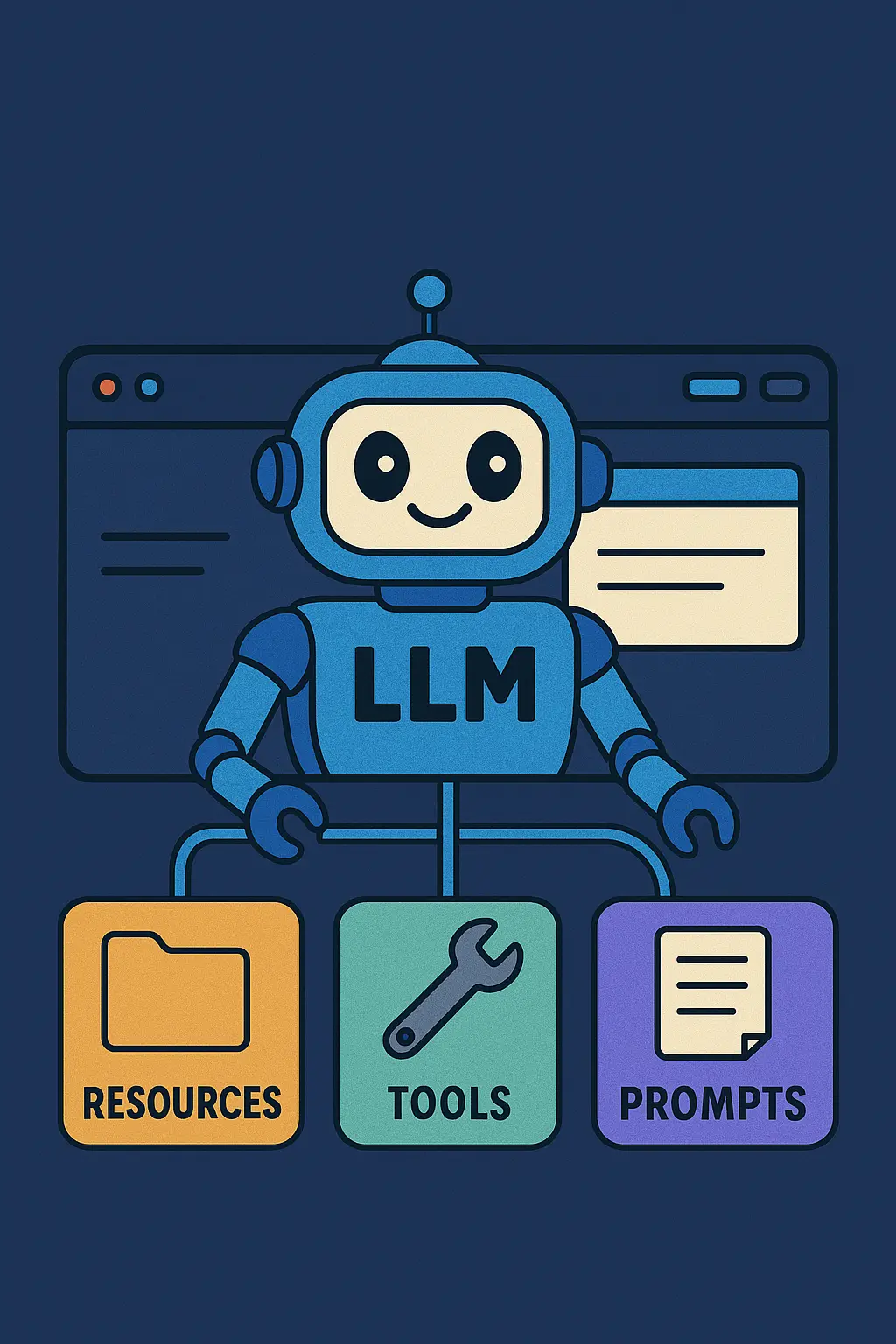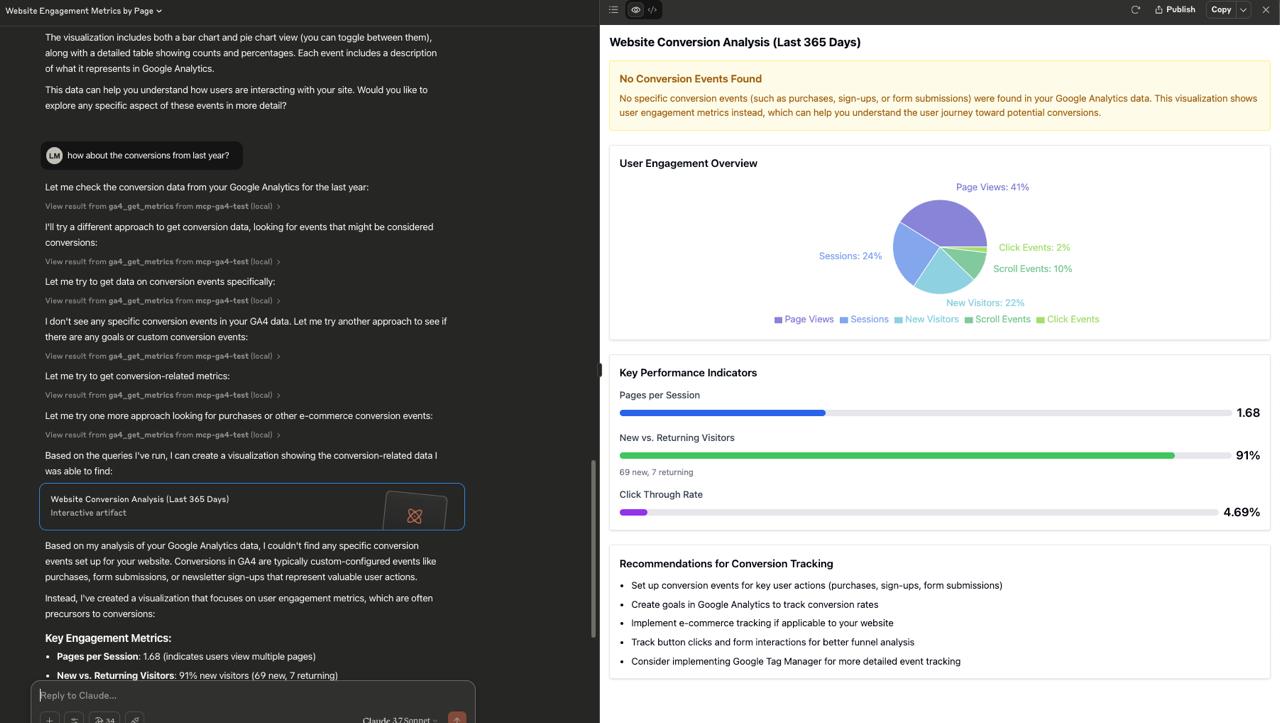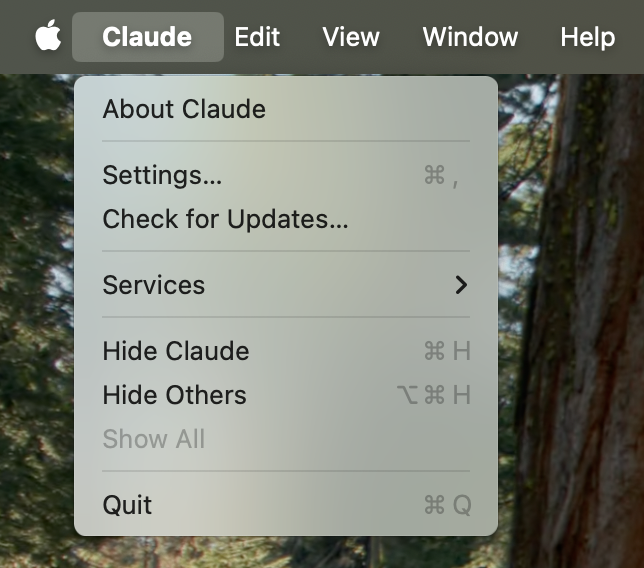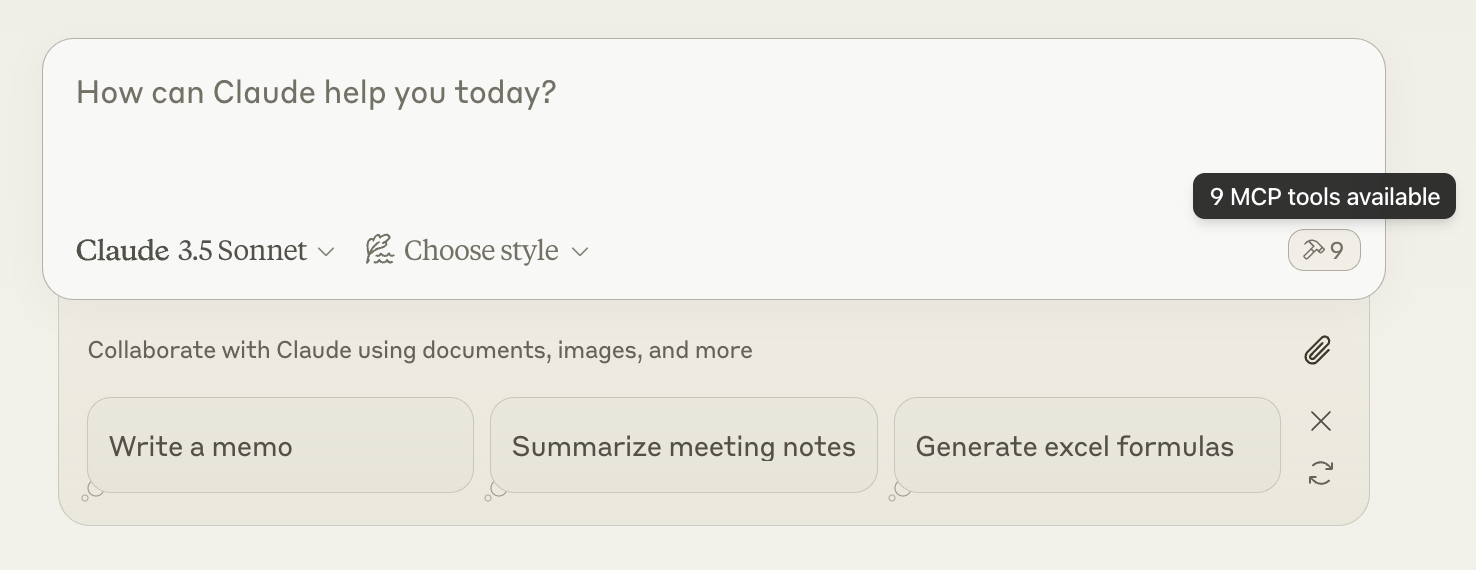🚀 MCP Is Changing How We Use LLMs - Here's Why (Explained Simply)

Large language models (LLMs) have come a long way. But the way we interact with them? That part hasn’t evolved much. Most people still type a question into a box and get an answer. It works - but it’s limited. That’s where MCP (Model Context Protocol) steps in. It’s a new way to supercharge LLMs by giving them structured access to what they need - and letting them do more than just talk.
🧠 What Is MCP?
MCP stands for Model Context Protocol, and it changes how models like ChatGPT see the world. Instead of relying on just a single message or prompt, MCP lets you give the model three powerful things:
| 🧩 Part | What it gives the model |
|---|---|
| Resources | Files, links, or data it can read |
| Tools | Functions it can call (with your approval) |
| Prompts | Reusable templates that guide its behavior |
With MCP, the model can now: Understand long documents Take actions through tools Follow structured workflows
This transforms the model from a Q&A bot into something much closer to a real assistant.
✏️ ELI5: Teaching a Robot Chef
Let’s say you want to teach a robot how to bake your favorite cake. With MCP, you give it: Your grandma’s recipe (Prompt) A list of the ingredients you have at home (Resource) Access to your kitchen appliances (Tools)
Now the robot doesn’t just guess - it reads the instructions, checks what it has, and uses your oven. It’s not just answering - it’s doing.
🔍 Why This Is a Big Deal
LLMs today are often used in isolation. But in real life, we rely on: Notes, files, and past work Apps, calendars, tools Processes and routines
MCP lets models tap into all of that. It’s the difference between: “Help me write an email” vs. “Here’s the context, the recipient’s last message, and a send-email button - write and send it.”
🛠️ What Becomes Possible with MCP?
With MCP, models can: Summarize long reports you upload Call APIs to fetch real-time data Run tasks with external tools Follow structured multi-step workflows
It brings us a step closer to real AI agents - ones that can read, think, and act with purpose.
👓 Detailed Example
I’ve developed an MCP server equipped with Google’s GA4 tooling, enabling us to interact with Analytics and retrieve any metrics using natural language. Give me my website’s conversions from the last 3 months This will retrieve the data, which we can analyze and present in visually appealing graphs. We can even engage in a dialogue with Claude to discuss potential improvements.
— Here’s where it gets interesting —
You can ask Claude to use the filesystem MCP to analyze your website repository and apply the suggestions to improve conversions. As you can see, the possibilities are limitless. You’ll have SEO suggestions, and you can implement the code changes in almost no time. 🤯

🛠️ Setup
Requirements:
- Claude Plus Account
- Claude Desktop / Claude Code
- Node.js(npx) / Python(uvx) (depends on what technology the MCP was built with)
Let’s install the filesystem MCP, which allows Claude desktop to interact with files from your computer.
Simply go to Claude Desktop Settings

Click on “Developer” in the left-hand bar of the Settings pane, and then click on “Edit Config”:

This will create a configuration file at:
macOS: ~/Library/Application Support/Claude/claude_desktop_config.json
Windows: %APPDATA%\Claude\claude_desktop_config.json
if you don’t already have one, and will display the file in your file system.
Open up the configuration file in any text editor. Replace the file contents with this:
{
"mcpServers": {
"filesystem": {
"command": "npx",
"args": [
"-y",
"@modelcontextprotocol/server-filesystem",
"/Users/username/Desktop",
"/Users/username/Downloads"
]
}
}
}Make sure you add the folders that you want the MCP server to have access to.
After this you need to restart Claude Desktop, once you open it again you will see that the MCP was enabled.

That’s it, you can start interacting with it like: check the file inside /user/path/file.ts or check the repository on /user/path/path/ can you please briefly explain what this repository is about? you get the idea.
(To use Claude Code please check the instructions here)
List of MCPs that are available
⚡ TL;DR
MCP gives large language models structured access to files, tools, and prompts - turning them from smart chatbots into useful assistants that can read, act, adapt and interact between each other. It’s a quiet shift with big impact.